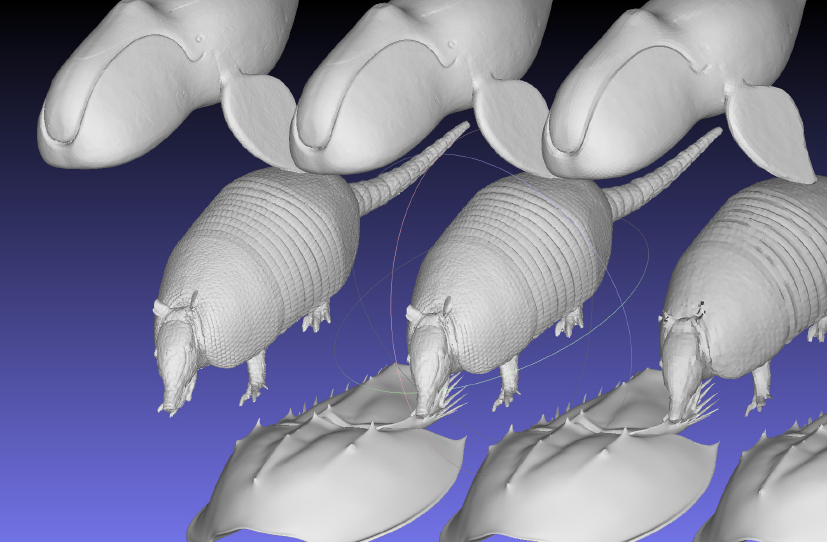
Accuracy measurement of automatic remeshing tools
Abstract
Surface Reconstruction from raw Pointclouds generates polygonal meshes characterised by typical local issues that need to be addressed by a global reorganisation of mesh connectivity during the Remeshing process. While in the applications for which remeshing algorithms have historically been developed, the problem can be addressed without affecting the mesh polycount, for the authoring of 3D assets intended for Real-Time Rendering applications, maintaining a low polycount is mandatory. However, there is a trade-off between the number of polygons and accuracy. Hence, in cases where accuracy is a primary concern, such as with Digital Cultural Heritage Objects, the topology of the mesh that ensures this reduction becomes crucial since, to an even polycount, the dimensional discrepancy between the original and different simplified meshes can vary significantly.
Therefore, it is vital to evaluate the characteristic quality obtainable from different remeshing algorithms with simplification, but despite the importance of the matter, there is a lack of metrics to perform such comparative benchmarks. This study aims to address this gap by defining and testing a Shape Complexity Index on real-world case studies, which is applicable uniformly and consistently to geometric shapes of generic complexity. Such index allows for pre-determine a target polycount and subsequently normalising
signed distance computations among different test simplified meshes, posing the basis for both quantitative and qualitative analysis of accuracy achievable by any automatic remeshing tool. Additionally, the proposed workflow is employable as an instrument for planning, monitoring, and reporting a digitisation campaign of objects belonging to the Cultural Heritage.
DOI: https://doi.org/10.20365/disegnarecon.32.2024.10
Keywords
Full Text:
PDFRefbacks
- There are currently no refbacks.
Copyright (c) 2024 Mattia Sullini
DISEGNARECON
ISSN 1828 5961
Registration at L'Aquila Law Court no 3/15 on 29th June, 2015.
Indexed in SCOPUS. Diamond Open Access. All papers are subjected to double blind peer review process by qualified reviewers.
Journal founded by Roberto Mingucci
